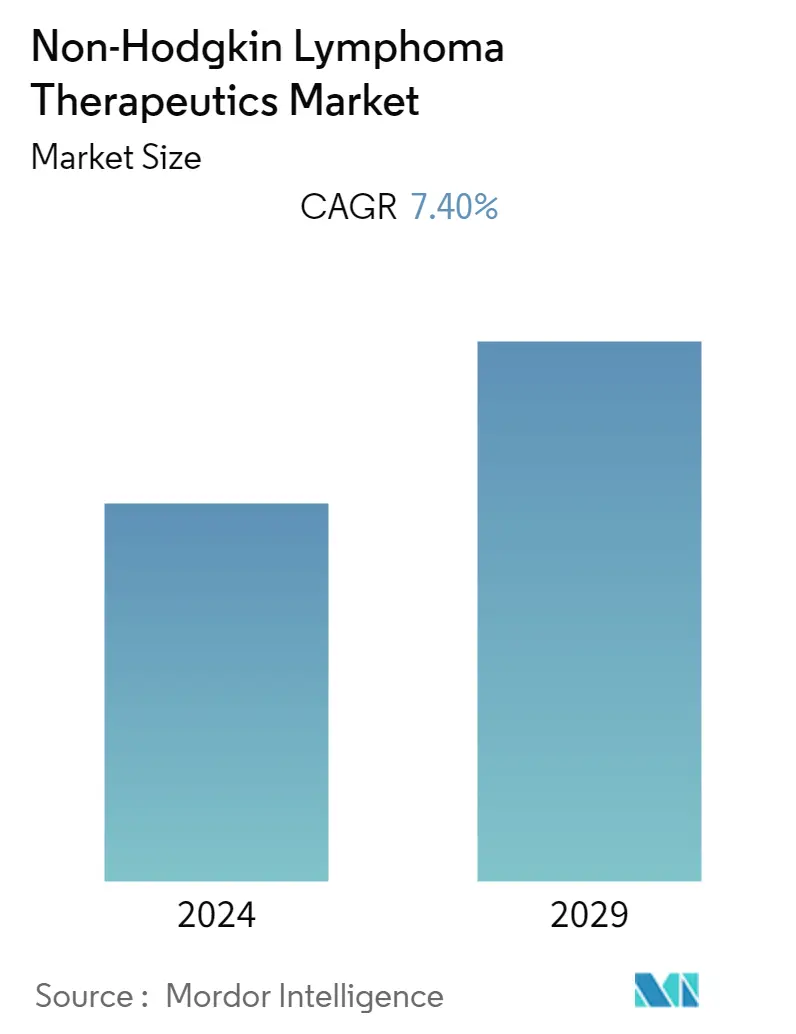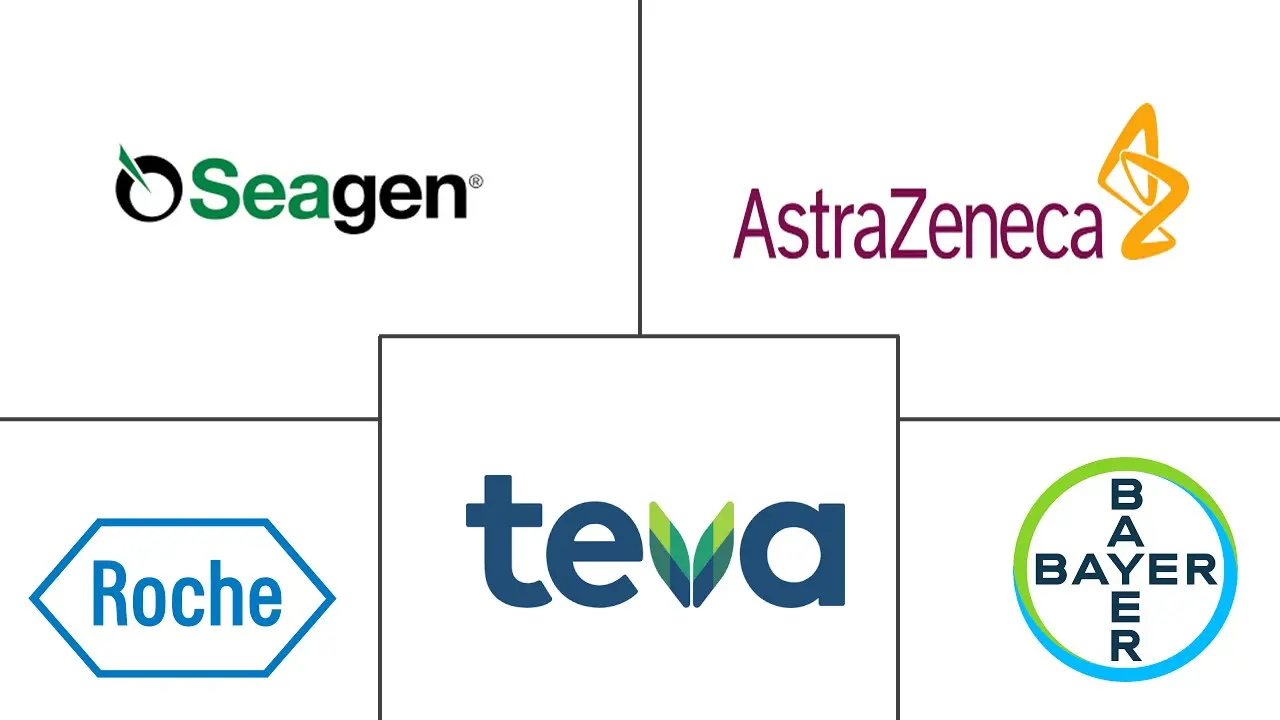Market Size of Non-Hodgkin Lymphoma Therapeutics Industry

| Study Period | 2019 - 2029 |
| Base Year For Estimation | 2023 |
| CAGR | 7.40 % |
| Fastest Growing Market | Asia Pacific |
| Largest Market | North America |
| Market Concentration | Medium |
Major Players
*Disclaimer: Major Players sorted in no particular order |
Need a report that reflects how COVID-19 has impacted this market and its growth?
Non-Hodgkin Lymphoma Therapeutics Market Analysis
The non-Hodgkin lymphoma therapeutics market is expected to register a CAGR of nearly 7.4% during the forecast period.
- The COVID-19 pandemic had some adverse impacts on market growth, as stated by the effects shown in various research studies. For instance, in August 2021, a research study published in BMC Infectious Diseases stated that non-Hodgkin's lymphoma presents a dilemma to healthcare professionals as there is concern that chemotherapeutic and immunosuppressive treatment which is a pillar of cancer therapy, may lead to a worsening of comorbid COVID-19 infections. Similarly, another research study published in August 2021 in the American Society of Hematology stated that patients diagnosed with B-cell non-Hodgkin's lymphoma (B-NHL) are at risk of severe COVID-19 disease and effective vaccination against SARS-CoV-2 may help protect patients with lymphoma against COVID-19. However, the intrinsic immune deficiency associated with B-NHL, as well as the anti-lymphoma treatment itself, may hamper responsiveness to vaccinations. Such studies provide insight into the adverse impact of COVID-19 on non-Hodgkin lymphoma therapeutics market growth during the initial pandemic. However, the market has seen a positive shift in the late pandemic and is expected to grow significantly over the forecast period.
- Certain factors that are driving the market growth include the growing burden of non-Hodgkin lymphoma (NHL), demand for innovative drugs and novel technologies, and an increase in the number of regulatory approvals for NHL therapy drugs. According to the study published in the American Society of Hematology in November 2022, it is estimated that 779,000 new NHL cases were projected to occur by 2040, with an increase of 43% increase from 2020. Therefore, the rising burden of the NHL is expected to drive market growth due to the rising adoption of NHL therapeutics.
- The rising approvals of drugs for the NHL are also expected to drive market growth. For instance, in November 2022, the United States Food and Drug Administration (FDA) accepted for Priority Review the Biologics License Application (BLA) for Genmab's subcutaneous epcoritamab (DuoBody-CD3xCD20), an investigational bispecific antibody, for the treatment of patients with relapsed/refractory large B-cell lymphoma (LBCL) after two or more lines of systemic therapy. In addition, in January 2022, a new gene therapy treatment named Breyanzi (lisocabtagene maraleucel) for the treatment of adult patients with diffuse large B-cell lymphoma received marketing authorization in the European Union. Such approvals are anticipated to drive the market growth due to accelerated drug discovery, driving the market growth.
- However, the high cost of NHL drugs and various complications associated with them are acting as major restraints for the non-Hodgkin lymphoma therapeutics market. Additionally, stringent regulatory guidelines are limiting the growth of the market.
